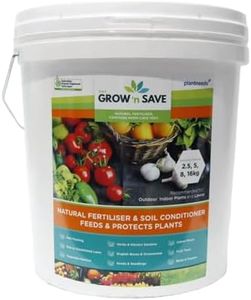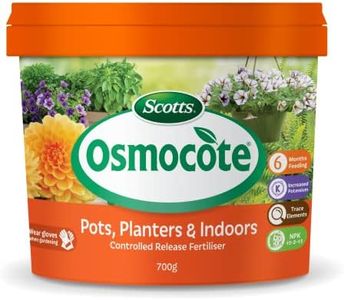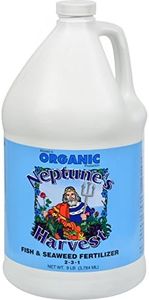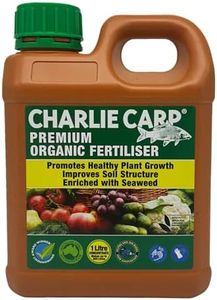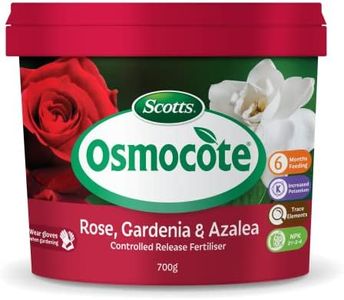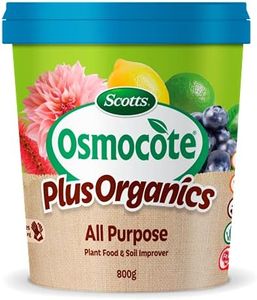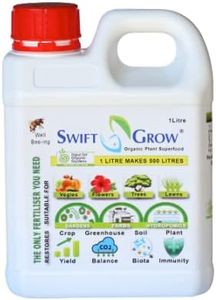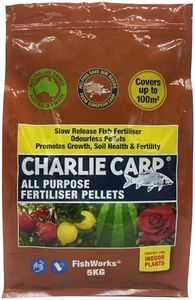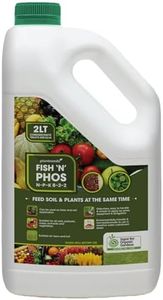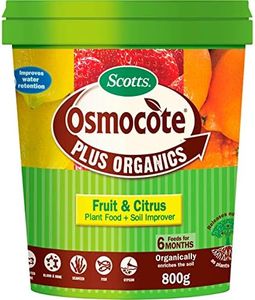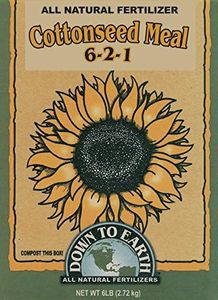We Use CookiesWe use cookies to enhance the security, performance,
functionality and for analytical and promotional activities. By continuing to browse this site you
are agreeing to our privacy policy
10 Best Organic Garden Fertilizers
From leading brands and best sellers available on the web.Buying Guide for the Best Organic Garden Fertilizers
Choosing the right organic garden fertilizer can make a big difference in the health and yield of your plants. Organic fertilizers are made from natural sources—like compost, manure, or plant materials—and feed the soil as well as the plants. When picking a fertilizer, it's important to think about what your plants need, the condition of your soil, and your gardening goals (like growing vegetables, flowers, or lawns). Understanding the different types and nutrient contents helps you choose a fertilizer that will support healthy growth in your garden.N-P-K RatioThe N-P-K ratio tells you how much nitrogen (N), phosphorus (P), and potassium (K) is in the fertilizer. These are the three main nutrients plants need for growth: nitrogen helps leaves grow, phosphorus supports roots and flowers, and potassium strengthens overall plant health. Lower ratios usually mean a gentle, slow feed, while higher numbers provide a quick boost. If you want leafy growth (like for lettuce), pick a higher nitrogen ratio; for blooms or fruits, look for more phosphorus and potassium. Always match the N-P-K with your plants' main needs.
Source MaterialThis refers to what the fertilizer is made from, such as manure, bone meal, compost, fish emulsion, or seaweed. Each source offers a unique blend of nutrients and benefits. For example, compost is well-rounded and slowly improves soil, while fish emulsion acts fast for a nutrient boost. If your soil needs long-term improvement, compost or well-rotted manure work well; for quick results, liquid sources like fish emulsion are handy. Choose a source based on how fast you want results and whether you prefer animal-based or plant-based options.
Release SpeedThis means how quickly the fertilizer releases nutrients. There are slow-release types, which break down over time and feed steadily, and quick-release types, which provide nutrients right away. Slow-release is best if you want low maintenance and steady growth, while quick-release helps if you need to fix a visible deficiency fast. Base your choice on how involved you want to be and whether your plants need immediate help or long-term support.
Form (Dry vs. Liquid)Fertilizers come in dry (granular or powder) and liquid forms. Dry types are best for mixing into soil before planting or for slow feeding, while liquids are great for feeding established plants and giving them a quick nutrient boost. If you want a set-and-forget option, use dry forms; if you like regularly feeding your plants or correcting issues fast, go with liquid.
Additional Nutrients and AmendmentsBesides the main nutrients, some fertilizers contain extra minerals like calcium, magnesium, or trace elements, or even beneficial microbes. These improve soil health and help plants resist diseases or deficiencies. If your soil is known to lack certain minerals, or your plants are showing signs of specific deficiencies, pick a fertilizer with these extras for balanced growth.


